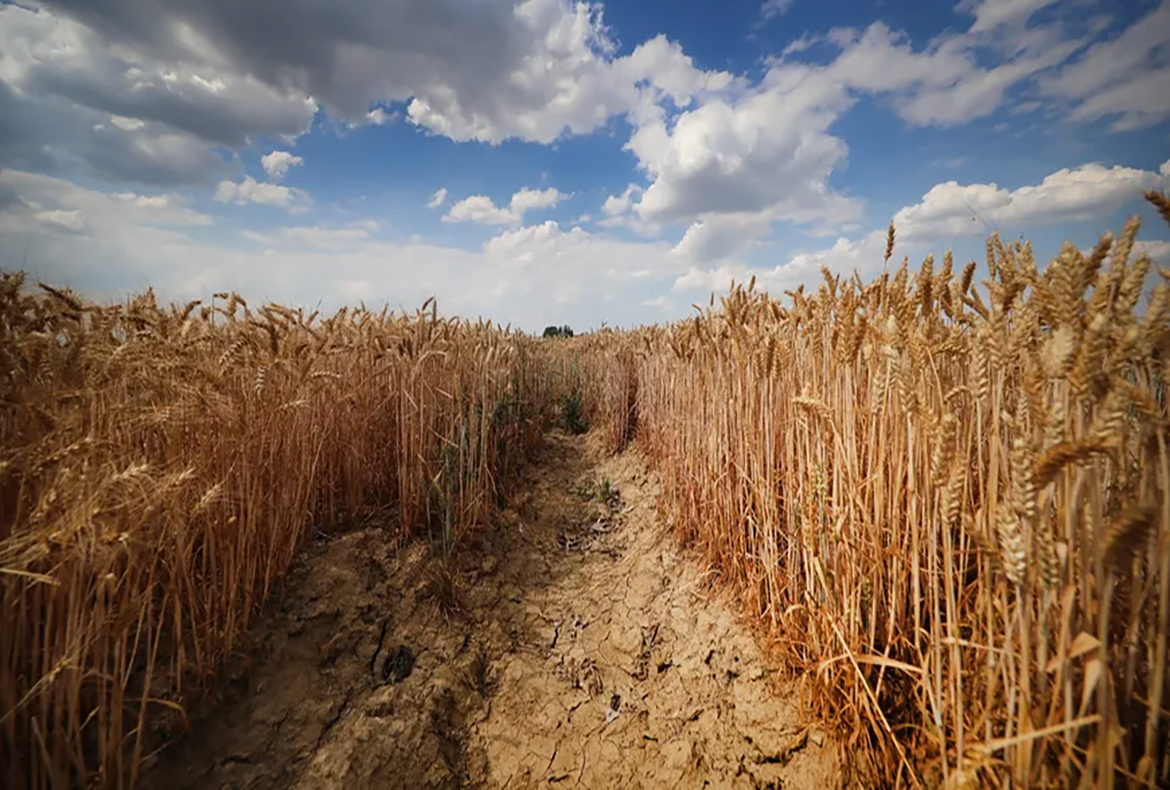The first observations of heat waves in agriculture are as follows:
- Borders of parched plots
- Bare tree branches
- Burnt leaves
- Cracked floors
The thermal amplitude between day and night decreases while nighttime temperatures remain high.
In this critical period, crops are subjected to high heat and very high evaporation. The dry earth for a long time prevents the plants from surviving.
Droughts are of 2 types:
– Meteorological drought
This is what happened when it did not rain for a long time. Water deficit is measured against normal precipitation values.
In winter, meteorological drought can go unnoticed because the vegetation is at rest. However, even in winter, drought is not without consequences because it does not allow the recharge of the water tables.
Water drought in soils is a superficial water deficit (over 1 or 2 cm in depth). In contrast, in summer, when vegetation is active and draws water from the soil and releases it into the atmosphere by evapotranspiration, the soil dries out more quickly.
– Hydrological drought.
We speak of hydrological drought when the water tables, lakes, rivers and streams have a low level.
Absence of precipitation or absence of infiltration of the water which runs off instead of being absorbed by the soil (impermeable soil, compacted soil, etc.) either because the water is captured by the vegetation before reaching the sub- ground.
Rain is only effective if the water reaches watercourses (through runoff) and groundwater (by deep infiltration after water saturation of the surface soil).
It is only in winter that the rains are able to recharge the water tables because during this period the resting vegetation hardly absorbs water. On the other hand, in spring and summer, rainwater is captured by plant systems and consumed immediately, directly and by evapotranspiration, that is, it is unable to reach the water tables. phreatic.
A rainy spring cannot compensate for a dry winter, which can be very damaging if the following summer is dry.
The phenomenon of global warming accentuates droughts because very high temperatures cause greater evaporation of water in summer.
To avoid the harmful effects of drought, it is recommended to protect crops with the most effective possible anti-evaporation barrier from the soil, wherever possible.
A POSITIVE SOLUTION: AGROFORESTRY
Agroforestry is one of the most relevant solutions to adopt to deal with climate change and improve soil quality for food security.
Agroforestry is defined by the presence of trees in crop fields and pastures, which allows optimization of water management, soil restoration and mitigation of the effects of climate change.
Agroforestry has the advantage of storing more carbon than a conventional cropping system, limiting the heat stress of crops and offering diversified agricultural production.
Well-conducted agroforestry, in addition to increasing biodiversity, optimizes water use, with tree roots reaching much deeper than those of annual plants.
The use of pruning timber (BRF) on site improves soil fertility and greatly reduces runoff and erosion, water infiltrating rapidly thanks to the presence of trees, which allows and promotes the good structure of the soil. soils.



Give a Reply
You must be logged in to post a comment.